In '86 the Supra dropped its first name, and with the introduction of the fourth-generation model in late-'92, now shared about as many ties with the company's entry-level sport compact as it did with the brand's corny little Paseo. All of that was mostly because of the MKIV Supra's factory turbocharged 2JZ-GTE powerplant—an inline-six-cylinder engine so ready to make sobering sorts of horsepower that, even 23 years later, pro motorsports teams of all sorts still seek out the early '90s 3.0L just as they did decades prior. And for good reason. Few production engines before or since are capable of the sort of outlandish horsepower the 2JZ-GTE's good for with so few modifications.
 | The 2JZ-GTE is based upon a 3.0L, inline-six, cast-iron short-block with an aluminum head. From the factory, North American versions put down 320hp but leave a whole lot of wiggle room for much more.
| The 2JZ-GTE is based upon a 3.0L, inline-six, cast-iron short-block with an aluminum head. From the factory, North American versions put down 320hp but leave a whole lot of wiggle room for much more.
WHERE TO FIND ONE
- Here in the US, the 2JZ-GTE, which was a clean-sheet design, wholly independent of the preceding Supra's 7M-GTE, was available only in '93-'98 Supra Turbo models.
- In Japan the 2JZ-GTE was introduced in '91 underneath the Toyota Aristo's hood and survived within select Japanese Supras until it was curtains for the car altogether in '02.
- The 2JZ-GTE's naturally aspirated and easier-to-find older sibling, the 2JZ-GE, is based upon the same short-block and nearly identical but higher-compression rotating assembly, but as far as Toyota's concerned, is only good for about 230 hp. You don't care about these. Stay away from them by not looking underneath the hoods of non-turbo, fourth-generation Supras as well as Lexus' IS300, GS300, and SC300.
 | Toyota's 2JZ-GTE comes in a few different varieties and can be sourced from multiple chassis, the most obvious of which is the '93-'98 Supra Turbo.
| Toyota's 2JZ-GTE comes in a few different varieties and can be sourced from multiple chassis, the most obvious of which is the '93-'98 Supra Turbo.
THE JDM ALTERNATIVE
Overseas derivatives of the 2JZ-GTE include the 1JZ-GTE—a destroked, 2.5L version of the familiar cast-iron longblock of which later versions featured variable intake cam phasing and a single turbo. Even the 2JZ-GTE was updated for the Japanese market in '97, when the engine received the same VVT-i treatment as the 1JZ-GTE with updated turbos. But you don't live in Japan and, chances are, the engine you care about is the North American-bound 3.0L that makes more power and made you want the Japanese-made supercar since before you were old enough to reach the pedals on a Huffy. But you should; JDM engines are easier to source, less expensive, and just as capable despite some of their shortcomings, like smaller fuel injectors and cams.
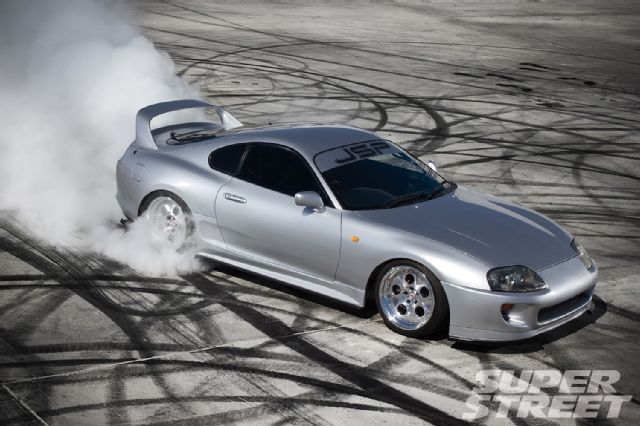 | 1993 Toyota Supra RZ Burnout
| 1993 Toyota Supra RZ Burnout
 | 2Jz Gte Engine Valve Cover
| 2Jz Gte Engine Valve Cover
IT'S ALL ABOUT THE BLOCK
Toyota took cues from Nissan's circuit-owning RB series of engines when developing its 3.0L 2JZ platform. Like the RB26DETT, the 2JZ's inline configuration lends itself to a design that's naturally balanced. Unlike V-type engines, half of the block's rotating assembly doesn't get tossed around in opposite directions from one another. Watch the 2JZ's mess of pistons and rods spin about and you'll notice its front three cylinders do the opposite of its rear. The even distribution of weight means the typical polar rocking motion you'll find in a V-6, for example, isn't there. All you care about, though, is that the design means you can rev it higher longer, safer, and smoother than just about anything else.
 | Toyota's cast-iron block is incredibly simple yet features key upgrades that help preserve engine life while under boost, like the factory-supplied oil cooler that sandwiches itself in between the oil filter and the block.
| Toyota's cast-iron block is incredibly simple yet features key upgrades that help preserve engine life while under boost, like the factory-supplied oil cooler that sandwiches itself in between the oil filter and the block.
Being able to double power levels may not seem like something a simple engine's capable of, but that's sort of what make all of this possible. Looking for an engine capable of 700 or more horsepower without cracking open the bottom end? Build it out of heavier-duty cast-iron instead of aluminum, give it a solid deck to ward off cylinder movement, stuff in a forged crank, and tame the compression ratio with dish-shaped pistons just like Toyota did. A series of seven main caps keep the crank from shifting and under-piston oil squirters cool the rotating assembly and keep it lubricated at high RPMs. Toyota's people also carefully considered the engine's geometry, integrating the elusive square-shaped design where bore diameter and stroke length are one and the same.
 | Inline engines like the 2JZ-GTE typically operate smoother and with less vibration than V-type engines with rotating assemblies that throw their weight back and forth between two different banks.
| Inline engines like the 2JZ-GTE typically operate smoother and with less vibration than V-type engines with rotating assemblies that throw their weight back and forth between two different banks.
"Aside from a temperamental bracket that secures the tensioner in place, an oil pump seal that's notorious for pushing itself out, and a crank pulley that likes to come apart, failures don't occur often," according to Southern California Supra expert Ian Sai-Ngarm of FSR Motorsport Creations.
 | Massive power gains are possible mostly because of the 2JZ-GTE's cast-iron block that requires little work. Aluminum's lighter, sure, but few materials compare to the strength of cast-iron.
| Massive power gains are possible mostly because of the 2JZ-GTE's cast-iron block that requires little work. Aluminum's lighter, sure, but few materials compare to the strength of cast-iron.
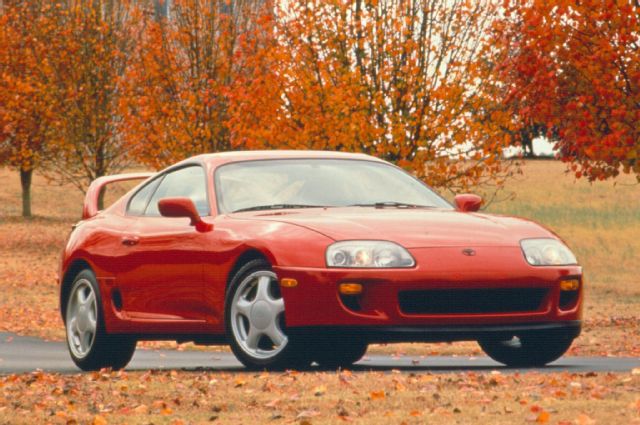 | 1994-toyota-supra-turbo-front-quarter
| 1994-toyota-supra-turbo-front-quarter
2JZ-GTE The Good & Bad
Pros:
- Capable of 2,000 hp
- Tightly-packaged, inline configuration
- Non-interference valvetrain
- Bulletproof cast-iron block
- Forged crankshaft
- Massive main journals
- Under-piston oil squirters
- Square bore and stroke
- Timing belt, oil pump, and cooling system capable of 1,000-plus hp
 | Toyota also implemented a solid deck that eliminates cylinder shifting that's common in open-deck designs—another reason huge power gains are possible here.
| Toyota also implemented a solid deck that eliminates cylinder shifting that's common in open-deck designs—another reason huge power gains are possible here.
Cons:
- Failure-prone timing belt tensioner bracket
- Oil pump seal can blow out
- Crank pulley can come apart
- Poor-flowing cylinder head
- Failure-prone sequential turbo system
 | Seven main caps fasten the forged crank in place. High-horsepower applications require aftermarket billet main caps like these, but unless the engine's geometry's been changed, the factory crank won't need to be swapped.
| Seven main caps fasten the forged crank in place. High-horsepower applications require aftermarket billet main caps like these, but unless the engine's geometry's been changed, the factory crank won't need to be swapped.
 | 2Jz Gte Engine Ports
| 2Jz Gte Engine Ports
750HP THE EASY WAY
More than doubling the 2JZ-GTE's power output isn't hard, according the guys at FSR, but ditching the sequential turbo system for a larger, single compressor has got to happen first. First, look for a turbo in the 64-80mm range accompanied by a higher-flowing external wastegate and ditch the side-mount intercooler for a front-mount unit with more surface area. Both GReddy and HKS offer upgrade kits that include everything you need to do just that. You'll also need a higher-flowing fuel pump, larger-diameter delivery lines, 1,000cc fuel injectors, and some sort of tunable ECU, like AEM's Infinity, for example. Aftermarket cams like those from Brian Crower will make getting to that 750hp mark a whole lot easier and are about the only thing you'll need to touch underneath the valve cover this side of stiffer valve springs to avoid potential valve float.
 | Toyota's inline-six initially featured a sequential turbo layout, where a pair of turbos work together to provide impressive peak power with as little low-end lag as possible. Twin-turbo setups like this preserve the Supra's heritage but ditch the often unreliable sequential configuration for a parallel layout.
| Toyota's inline-six initially featured a sequential turbo layout, where a pair of turbos work together to provide impressive peak power with as little low-end lag as possible. Twin-turbo setups like this preserve the Supra's heritage but ditch the often unreliable sequential configuration for a parallel layout.
MORE POWER THAN YOU'LL KNOW WHAT TO DO WITH
The 2JZ-GTE's already proven itself worthy of belting out more than 2,000hp. You'll need more than a 64mm turbo to get anywhere close, though, but it's less complicated than you think. Start with something in the 72mm range, and plan on bulking up the bottom end with forged pistons and rods as well as billet main caps. Larger-diameter head studs will keep the head from lifting off of the block. Even bigger cams and head porting have also got to be addressed here, and if you don't want to run out of fuel, look to 2,000cc injectors—12 of them if you're power goals are silly enough—along with a trio of fuel pumps, depending on how ridiculous and far away from that Celica lineage you want to get.
 | 2Jz Gte Engine Engine Stamp
| 2Jz Gte Engine Engine Stamp
GENTLEMEN AND THEIR AGREEMENTS
The 2JZ-GTE translates into a seemingly conservative 320hp and 315 lb-ft of torque for North American-bound models, and there's a reason things seem so timid. Since '89, Japanese automakers have avoided expensive horsepower wars by capping production-car output in its homeland to 276hp. At least on paper. This Gentlemen's Agreement has since been broken, but the once settled-upon but often-not followed terms meant engine's like Toyota's 2JZ-GTE left the production line with a whole lot of unsqueezed juice left in them. At the time, the agreement made a lot of sense for a country with a maximum speed limit of 62mph, but has since proven unrealistic for American car-buyers who who expect mom's minivan to make more power than a mid-'90s supercar. All this means to you is that turning 400hp out of the 2JZ-GTE with a few bolt-ons any numbskull could handle is easier than you think.
 | The aluminum cylinder head features four valves per cylinder and a pent-roof design. If the 2JZ-GTE has any sort of shortcoming, it's in the head. Here, airflow can be improved upon through porting, and more aggressive cams are almost always necessary with high-horsepower applications.
| The aluminum cylinder head features four valves per cylinder and a pent-roof design. If the 2JZ-GTE has any sort of shortcoming, it's in the head. Here, airflow can be improved upon through porting, and more aggressive cams are almost always necessary with high-horsepower applications.
SEQUENTIAL BOOST
Toyota's 2JZ-GTE gets all 320hp from a sequentially paired team of Hitachi turbos codeveloped by Toyota that aren't a whole lot different than the T3 turbo you once stuck on your Civic. Unlike parallel twin-turbo setups where two equally sized turbos huff the same amount of air at the same time, sequential layouts allow one turbo to do its job first and the other to join in at higher engine speeds. Often times a smaller turbo precedes a larger one, but with the 2JZ-GTE, equal-sized turbos sit at both ends. The Supra was one of the first cars to prove that sequential turbocharging didn't have to be clunky and unreliable. Here, by 1,800 rpm the first turbo's already online. Stab the throttle, let the ECU, wastegate, and a couple of bypass valves do their jobs, and by 4,000 rpm, two turbos are spinning full-song.
 | Toyota's clever, sequential turbo layout, which is typically ditched in higher-horsepower applications, is based upon a pair of Hitachi C12B turbos. Here, a single turbo does all the work early on before the second one—of equal size—comes online by 4,000 rpm.
| Toyota's clever, sequential turbo layout, which is typically ditched in higher-horsepower applications, is based upon a pair of Hitachi C12B turbos. Here, a single turbo does all the work early on before the second one—of equal size—comes online by 4,000 rpm.
 | Everything You Need to Know About the Toyota 2JZ-GTE Engine
| Everything You Need to Know About the Toyota 2JZ-GTE Engine
2JZ-GTE PARTS GUIDE
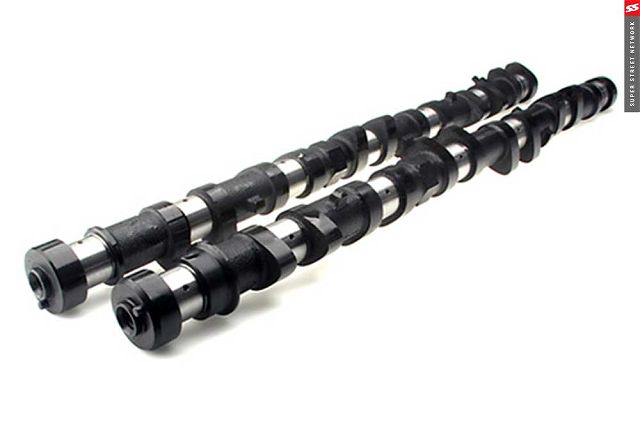 | Brian Crower Cams
| Brian Crower Cams
Brian Crower Cams: Aftermarket cams like those from Brian Crower are one of the best ways to shift the 2JZ-GTE's powerband into a more effective range, making the engine a whole lot more efficient. The company offers three stages of cams that are suitable for everything from daily drivers to full-blown drag cars.
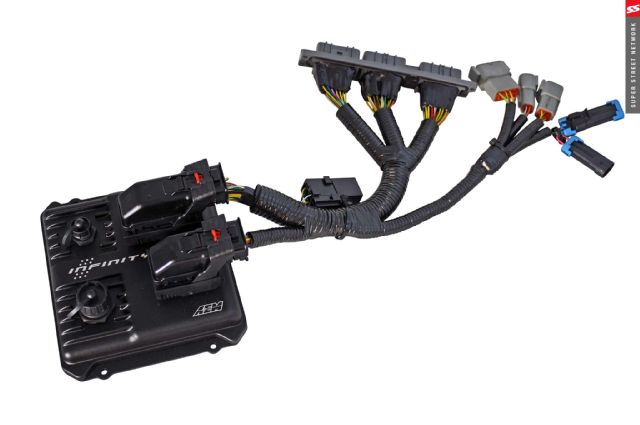 | Aem Infinity Programmable Ecu
| Aem Infinity Programmable Ecu
AEM Infinity Programmable ECU: The Supra's cast-iron block is strong, but without the right tuning, it'll blow to smithereens just like any other engine. AEM's plug-and-play Infinity ECU connects right up to the Supra's engine and chassis harnesses and allows for complete control over everything that's going on with the engine and a whole lot more.
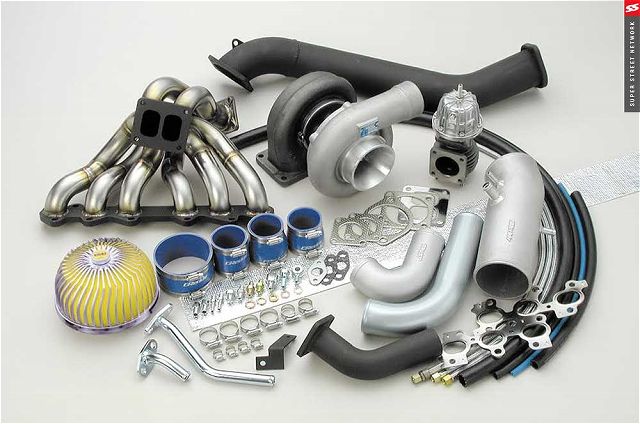 | Greddy Turbo Upgrade
| Greddy Turbo Upgrade
GReddy Turbo Upgrade: The 2JZ-GTE's factory turbos will only get you so far. As it turns out, a single-turbo overhaul, like something from GReddy, has got to happen if you want to get serious. GReddy's single-turbo conversion kits include all of the important bits, like an equal-length exhaust manifold, an external wastegate, and the turbo itself, with options serious enough to allow for nine-second time slips.

